Introducción
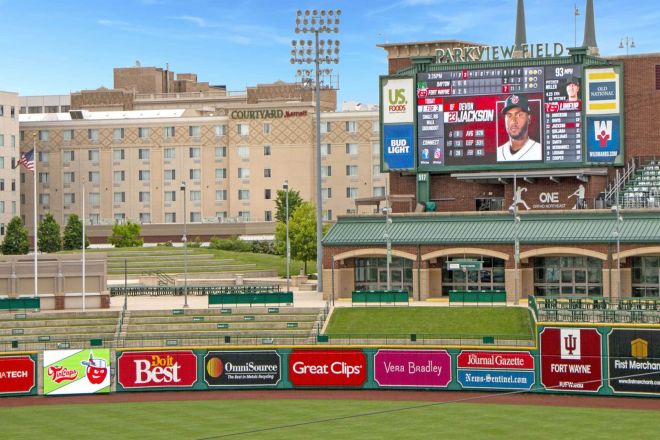
pantallas LED on sports fields have become an integral part of modern sports venues. These displays not only provide a high-definition and lifelike visual experience but also bring a more colorful viewing experience to the audience through diverse functions and interactivity.
With its unique advantages, LED displays are playing an increasingly important role on the sports field.
1. What are the benefits of using LED displays in sports venues?
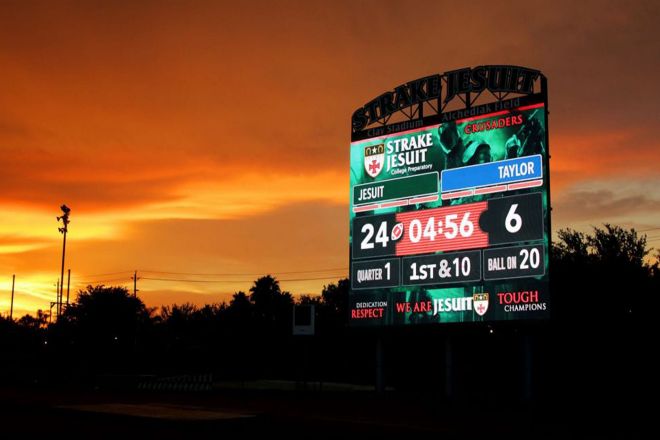
The benefits of using LED displays in sports venues are multifaceted, not only in improving the audience’s viewing experience but also in many aspects, such as real-time display of game information, improvement of commercial value, and creation of event atmosphere.
En primer lugar, the LED display screen brings an unprecedented visual feast to the audience with its excellent picture quality and clarity. Whether it is the exciting moments of the game or the subtle movements of the athletes, they can be presented in a high-definition and smooth way through the LED display.
This greatly enhances the audience’s viewing experience, making them feel as if they are at the game site and feel the passion and tension of the game.
En segundo lugar, LED display screens play an important role in real-time information display. In sports games, real-time updates of scores, time, player profiles, and other information are crucial for viewers to understand the progress of the game.
The LED display screen can display this information quickly and accurately, allowing the audience to keep track of the latest developments in the game. At the same time, through the LED display, the audience can learn about the event’s relevant background and increase their understanding and interest in the game.
Además, LED display screens also reflect the commercial value of sports venues. Advertising is an integral part of sports events. As a carrier for advertising, LED display screens have become an ideal choice for brands to advertise due to their high exposure rate and wide audience coverage.
By playing advertisements on LED displays, brand owners can expand brand awareness and enhance brand image, thereby maximizing commercial value.
Al mismo tiempo, the interactivity of LED displays also adds more fun to sports venues. Audiences can interact with the LED display through mobile phones or other devices and participate in games, voting, and other activities to increase the sense of participation and fun in watching the game.
This interactive design not only enriches the spectators’ viewing experience but also brings more business opportunities to the stadiums.
Finalmente, LED displays also play an important role in creating an event atmosphere. By playing exciting music and displaying team logos and slogans, LED displays can quickly ignite the passion of the audience and create a warm and exciting event atmosphere.
The creation of this atmosphere not only improves the spectators’ viewing experience but also provides a better competition environment for athletes.
2. Basic elements of LED displays on sports fields
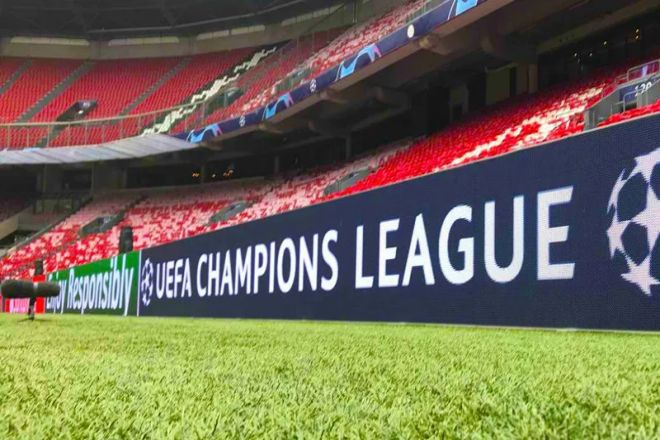
The basic elements of LED displays on sports fields mainly include the following aspects:
- Display effect
The display effect is one of the most basic and important elements of LED display. It covers many aspects, such as clarity, resolution, and color performance.
High definition and high resolution can ensure that viewers can clearly see the content on the screen even at long distances, while the accuracy and richness of color performance can restore real scenes and enhance the viewer’s visual experience.
- Stability and reliability
LED displays on sports fields need to withstand various harsh environmental conditions, such as high temperatures, high humidity, strong wind, etc. Therefore, stability and reliability are two of the basic elements of LED displays.
A high-quality LED display should have a good heat dissipation design, waterproof and dustproof functions, and wind and earthquake resistance to ensure stable operation in various environments and avoid malfunctions that may affect the progress of the game.
- Size and layout
The size and layout of LED displays on sports fields need to be reasonably planned based on the size of the venue, the number of spectators, and the needs of the event. A display that is too large may cause visual oppression, while a display that is too small may not meet the viewing needs of the audience.
At the same time, the layout of the display screen also needs to consider the audience’s viewing angle and viewing distance to ensure that viewers can get a good viewing experience at different locations.
- Interactivity and functionality
Modern LED display is more than just a simple display tool; it also has rich interactivity and functionality. For example, viewers can interact with the display through mobile phones or other devices and participate in games, voting, and other activities; the display can also update game information in real time, play advertisements, etc.
These interactive and functional designs can increase audience participation and satisfaction and enhance the viewing and commercial value of the event.
- Energy saving and environmental protection
With the increasing awareness of environmental protection, energy conservation and environmental protection have also become one of the important elements of LED displays in sports fields.
High-quality LED displays should use low-energy, high-efficiency LED chips and drive circuits to reduce energy consumption; at the same time, environmental factors should also be fully considered during the design and manufacturing process, and environmentally friendly materials and processes should be used to reduce the impact on the environment.
3. How does LED display improve the audience experience of sports events?
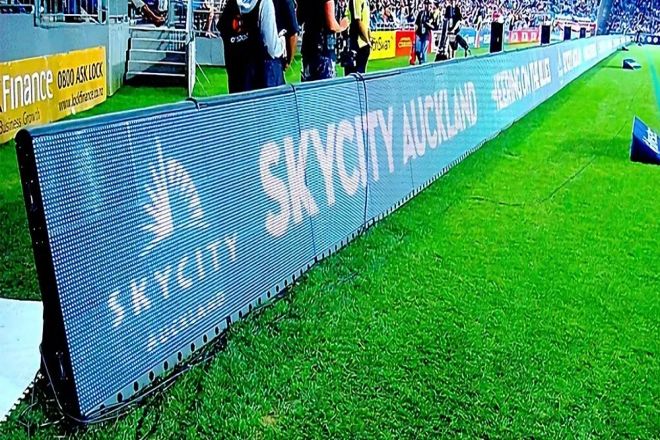
LED displays significantly enhance the spectator experience of sports events in a variety of ways, making them an indispensable part of modern sports venues. Here are a few key aspects of how LED displays specifically enhance the viewer experience:
- HD quality and lifelike colors
The LED display screen brings an immersive game-viewing experience to the audience with its high definition and realistic color performance. Whether it is the exciting moments in the game or the subtle movements of the athletes, they can be presented in a high-definition and delicate manner through the display. This high-quality visual experience makes the audience feel as if they are at the scene of the game, enhancing the immersion of watching the game.
- Real-time information update and display
The LED display can update and display game information in real-time, including scores, time, player data, etc. This allows viewers to follow the progress of the game at any time without worrying about missing any important information.
In addition, the display can also display highlight replays, statistics, tactical analysis, and other content to help viewers gain a deeper understanding of the game and enhance the viewing experience.
- Create an event atmosphere.
LED display screens play an important role in creating the atmosphere of the event. By playing exciting music, displaying team logos and slogans, and presenting various special effects and animations, the display can quickly ignite the passion of the audience and create a warm and exciting event atmosphere.
The creation of this kind of atmosphere helps to enhance the audience’s sense of participation and investment, making them enjoy the game process more.
- Enhance interactivity and entertainment.
LED displays provide viewers with more interactive opportunities and entertainment elements. Audiences can interact with the display screen through mobile phones or other devices and participate in games, voting, and other activities to increase the fun and participation of watching the game.
In addition, the display screen can also play advertisements, promotional videos, and other content to provide viewers with a diverse visual experience.
- Improve business value
As an advertising carrier, LED display screens have brought considerable commercial income to sports venues.
By playing with sponsors’ advertising and promotional content, the displays not only increase brand exposure and awareness but also bring additional revenue streams to venues. This increase in commercial value contributes to the sustainable development and operation of sports venues.
4. What are the different sizes and resolutions of LED displays commonly used in sports fields?
LED displays commonly used in sports fields come in a variety of sizes and resolutions to meet different venues and viewing needs. Here are some common sizes and resolutions:
- Dimensions:
The size of indoor LED displays is usually determined based on viewing distance and content requirements.
For example, the screen size of P0.9 is 60 inches, the screen size of P1.25 is 100 inches, the screen size of P1.5 is 120 inches, and the screen sizes of P2.5 and P3 are also usually 100 inches. These screen sizes are suitable for indoor locations such as shopping malls, stations, etc., and can provide clear and detailed images and video content.
For outdoor sports fields, large-size LED displays are usually chosen due to the long viewing distance. The specific size is determined based on the size of the venue and the number of viewers to ensure that the audience can clearly see the screen content.
- Resolución:
Indoor LED displays usually have higher resolutions to provide clearer and more detailed images. For example, P0.9 has a resolution of up to 1234×694, P1.25 has a resolution of 768×768, and P1.5 has a resolution of 640×640.
These high-resolution displays are suitable for places where high-definition videos, pictures, and other content need to be displayed.
For outdoor sports fields, considering the viewing distance and pixel spacing, the resolution is relatively low, but a certain degree of clarity still needs to be ensured. Common resolutions include P8 and P10, which mean the spacing between each pixel is 8mm and 10mm, respectively.
The P8 resolution has a screen resolution of 15625 dots/m², while the P10 resolution is 10000 dots/m². These resolutions are suitable for outdoor billboards, squares, stadiums, and other places to ensure that viewers can still see the screen content clearly from a long distance.
It should be noted that when selecting the size and resolution of an LED display, multiple factors such as viewing distance, content requirements, venue size, and budget need to be considered. At the same time, different brands and models of LED displays may differ in size and resolution, so selection needs to be made based on specific circumstances in actual applications.
5. What innovations are expected in the future of LED display technology in sports venues?
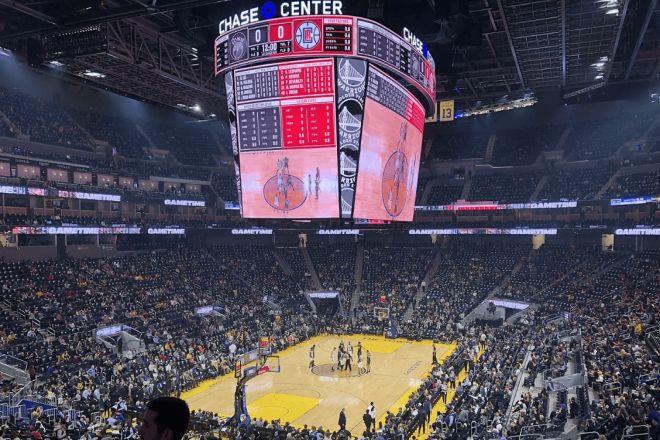
It is expected that there will be many innovations in the LED display technology of sports venues in the future, which will further enhance the audience’s viewing experience and promote the sustainable development of the sports industry. Here are some possible innovation directions:
- Higher-definition and larger-size displays:
With the advancement of technology, future LED displays may achieve higher resolutions and larger sizes to meet the audience’s demand for clearer and more shocking visual effects. Pursue. This will allow viewers to feel the passion and details of the game more closely.
- Smarter interactive functions:
Future LED displays may integrate more intelligent interactive functions, allowing viewers to participate more deeply in the game. For example, viewers can interact with the display via mobile phones or other devices and participate in activities such as games, polls, or real-time comments. This increased interactivity will increase audience engagement and satisfaction.
- More flexible display content:
Future LED displays may support more flexible content display methods. In addition to real-time game images, the display can also adjust the display content in real-time based on game progress, audience feedback, or sponsor needs, such as playing advertisements, displaying player information, presenting highlight replays, etc. This will make the display a more diversified and personalized information display platform in sports venues.
- More energy-saving and environmentally friendly design:
With the increase in environmental awareness, future LED displays may adopt more energy-saving and environmentally friendly designs and materials.
For example, by optimizing energy consumption management and using efficient LED chips and heat dissipation systems, the energy consumption and carbon emissions of the display screen can be reduced. At the same time, using recyclable or biodegradable materials to manufacture displays will also help reduce environmental impact.
- Smarter control system:
Future LED displays may be equipped with smarter control systems to achieve functions such as remote monitoring, fault diagnosis, and automatic adjustment.
This will make it easier for stadium managers to manage and maintain the displays, ensuring their stable operation and extending their service life.
Conclusión
In short, the LED display screen on the sports field is not only a tool to display the game pictures but also a link between the audience and the event.
In the future, with the continuous innovation of technology and the continuous expansion of application scenarios, LED displays will play an even more important role in sports stadiums, bringing audiences a more exciting and unforgettable viewing experience.
Finalmente, si quieres saber más sobre las pantallas LED, Por favor póngase en contacto con nosotros.
